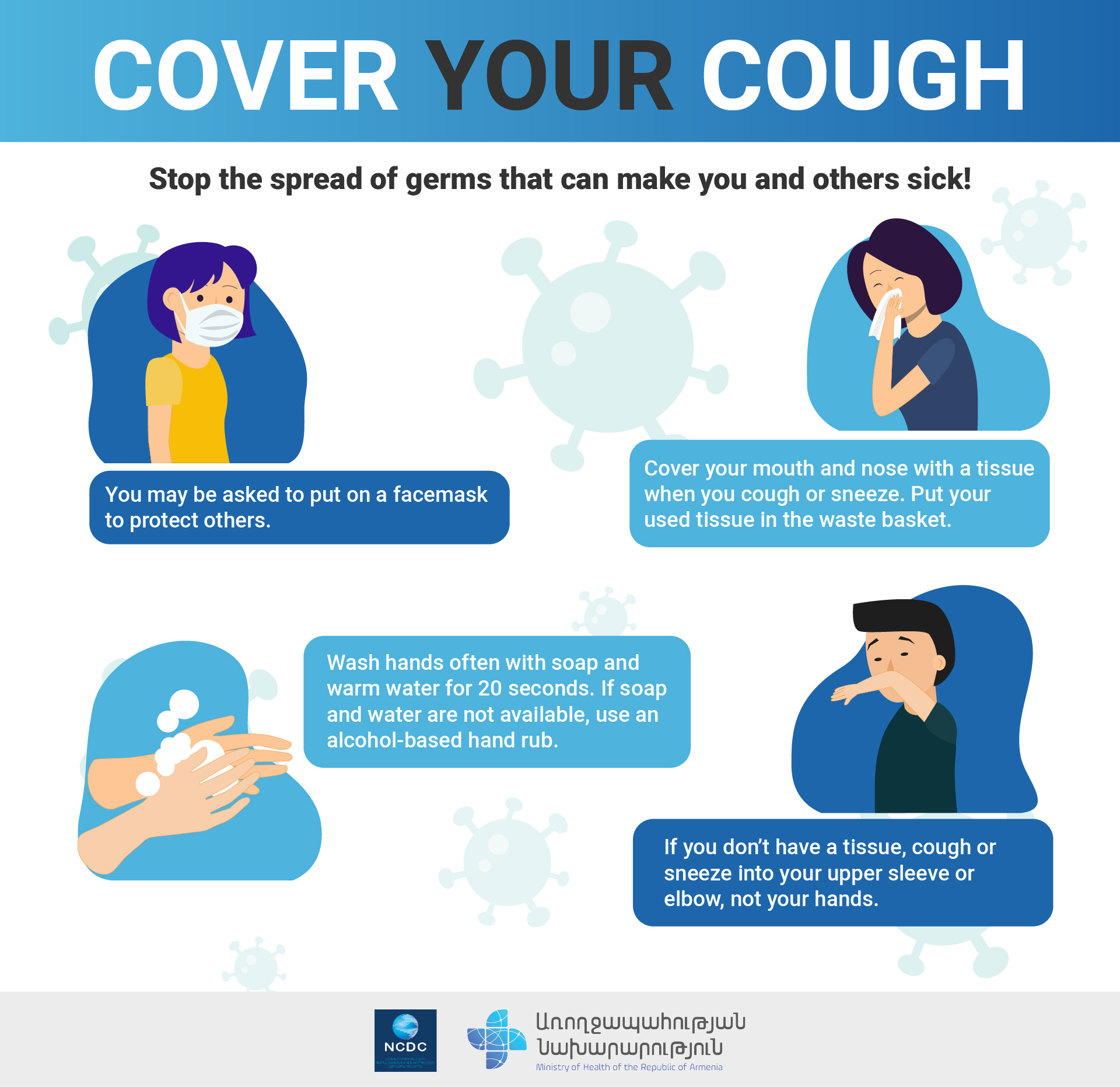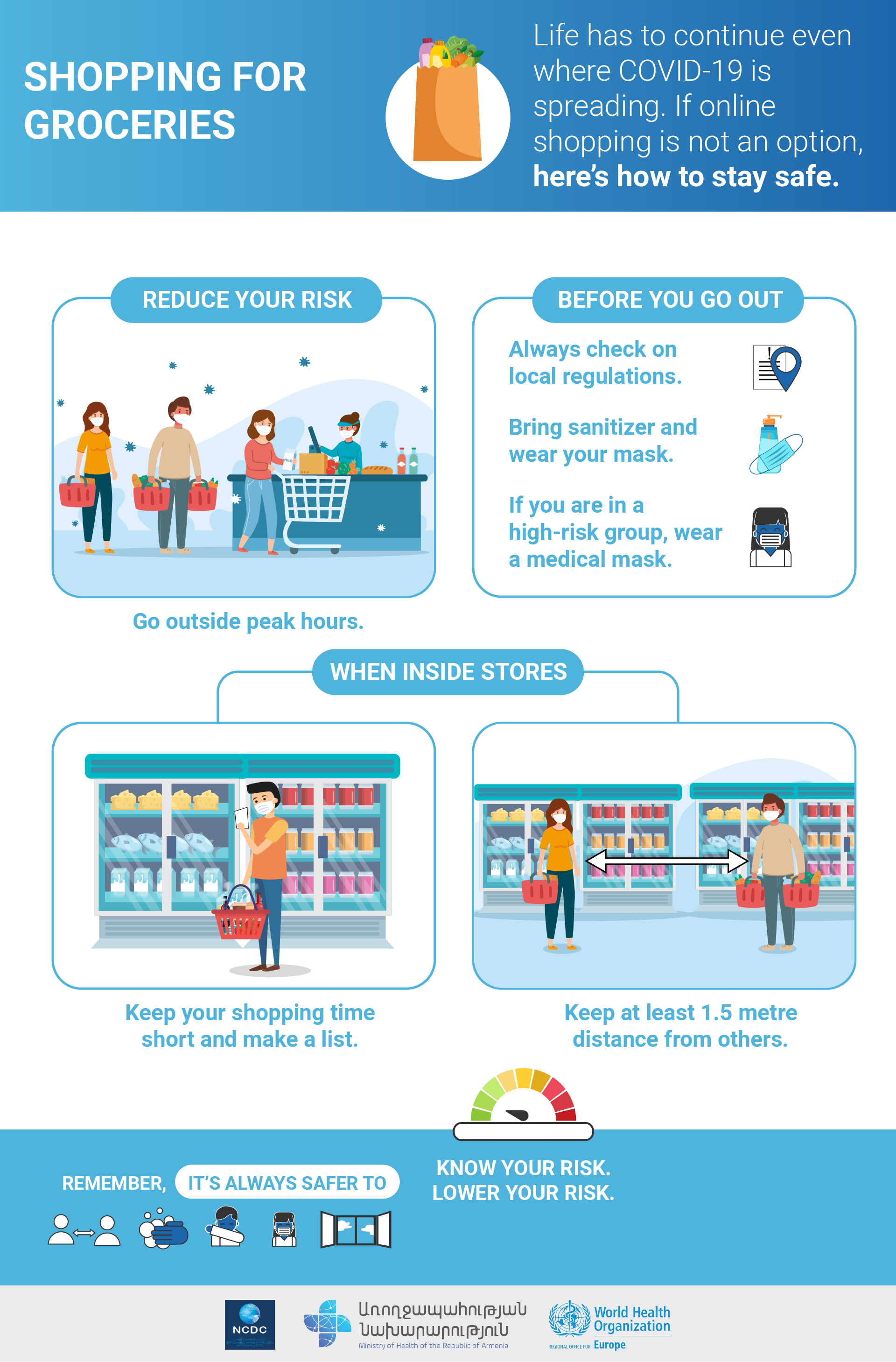Protect yourself from COVID-19
Wear a mask
● If you are not fully vaccinated and aged 5 or older, you should wear a mask in indoor public places.
● In general, you do not need to wear a mask in outdoor settings.
○ In areas with high numbers of COVID-19 cases, consider wearing a mask in crowded outdoor settings and for activities with close contact with others who are not fully vaccinated.
● People who have a preexisting health condition or are taking medications that weaken their immune system may NOT be protected even if they are fully vaccinated. They should continue to take all precautions recommended for unvaccinated people — such as wearing a well-fitted mask — until advised otherwise by their healthcare provider.
● Travelers who are not fully vaccinated should continue to wear a mask and maintain physical distance when traveling¹.
Stay 1․5 meters away from others 
-
● Inside your home: Avoid close contact with people who are sick.
○ If possible, maintain 1.5 meters between the person who is sick and other household members.
● Outside your home: Put 1.5 meters of distance between yourself and people who do not live in your household.
○ Remember that people without symptoms can still spread the virus to others.
○ Stay at least 1.5 meters (about 2 arm lengths) away from other people.
○ Keeping distance from others is especially important for people who are at higher risk of getting very sick¹.
Get Vaccinated 
● Authorized COVID-19 vaccines can help protect you from COVID-19.
● You should get a COVID-19 vaccine when it is available to you.
● Once you are fully vaccinated, you may be able to start doing some things that you had stopped doing because of the pandemic¹.
Avoid crowds and poorly ventilated spaces
● Being in crowds like in restaurants, bars, fitness centers, or movie theaters puts you at higher risk for COVID-19.
● Avoid indoor spaces that do not offer fresh air from the outdoors as much as possible.
● If indoors, bring in fresh air by opening windows and doors, if possible¹.
Wash your hands often 
● It’s especially important to wash:
○ Before eating or preparing food
○ Before touching your face
○ After using the restroom
○ After leaving a public place
○ After blowing your nose, coughing, or sneezing
○ After handling your mask
○ After changing a diaper
○ After caring for someone sick
○ After touching animals or pets
● If soap and water are not readily available, use a hand sanitizer that contains at least 60% alcohol. Cover all surfaces of your hands and rub them together until they feel dry.
● Avoid touching your eyes, nose, and mouth with unwashed hands¹.
Cover coughs and sneezes 
● If you are wearing a mask: You can cough or sneeze into your mask. Put on a new, clean mask as soon as possible and wash your hands.
● If you are not wearing a mask:
○ Always cover your mouth and nose with a tissue when you cough or sneeze, or use the inside of your elbow and do not spit.
○ Throw used tissues in the trash. 
● Immediately wash your hands with soap and water for at least 20 seconds. If soap and water are not readily available, clean your hands with a hand sanitizer that contains at least 70% alcohol¹.
Clean and disinfect 
● If someone is sick or has tested positive for COVID-19, disinfect frequently touched surfaces. Use a household disinfectant product based on ethanol (at least 70% alcohol).
○ If surfaces are dirty, clean them using detergent or soap and water prior to disinfection¹.
Safe Use of Public Transport
While using the public transport, wear a mask, disinfect your hands, and cover your mouth while coughing or sneezing.
Monitor your health daily 
● Be alert for symptoms. Watch for fever, cough, shortness of breath, or other symptoms of COVID-19.
○ Especially important if you are running essential errands, going into the office or workplace, and in settings where it may be difficult to keep a physical distance of 1.5 meters.
● Take your temperature if symptoms develop.
○ Don’t take your temperature within 30 minutes of exercising or after taking medications that could lower your temperature, like acetaminophen.
● Follow the above guidelines if symptoms develop. ¹


